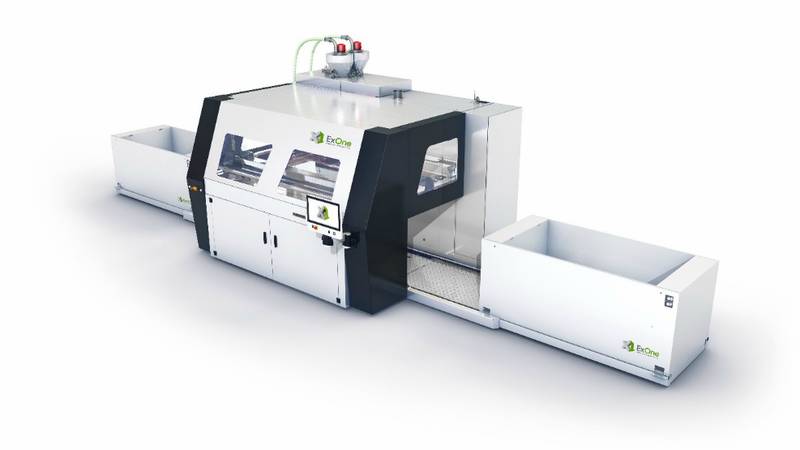
ExOne On the way to “Casting 4.0”

Reverse Engineering and 3D printing help to reach goals
Industry 4.0, Foundry 4.0, Guss 4.0 - nowadays developments are occurring so fast that instead of new concepts, only version designations are being assigned. With its vision of Guss 4.0, Christenguss AG of Bergdietikon in Switzerland is also blazing the trail into a digital future.
The constant pursuit of modernization and optimization mean that Christenguss is already presenting itself as a top modern foundry that manufactures complex sand casting molds in a 3D printing process. It is in this way that the Bavarian company ExOne from Gersthofen near Augsburg provides a valuable service with an S-Max production printer. This allows the foundry the production of sand molds of the highest quality and great individuality, from batch sizes upwards.
"Obsolete parts can thus be quickly reproduced in reverse engineering by means of the digital process," confirms Holger Barth of ExOne. "For example, if the original manufacturer is no longer in business or no longer offering the part." He also makes the point that Christenguss has become a real specialist in the field of tool-less mold production – particularly by using the S-Max-printer: "It produces complex sand cores and molds directly from CAD data, eliminating the need for physical models. In this way, Christenguss even produces complex inner contours with a printed sand core from the S-Max."
Changes and optimizations in the CAD data can be implemented immediately in the product design and the casting can therefore start within a short time and without additional tools. There is also a great freedom of design when printing detailed, high-precision cores and complex geometries.
In conclusion, Florian Christen again refers to time and cost savings: "Thanks to the 3D-printing of the molds, positioning systems can also be integrated directly into the sprue for a casting. As a result, this means specific set-ups for machining and plastering of parts are only necessary to a very limited extent."
This is another benefit for the foundry and thus also for their customers – and a wonderful prospect for Florian Christen's vision of Guss 4.0.


Trump weighs using $2 billion in CHIPS Act funding for critical minerals

Codelco cuts 2025 copper forecast after El Teniente mine collapse

Electra converts debt, launches $30M raise to jumpstart stalled cobalt refinery

Barrick’s Reko Diq in line for $410M ADB backing

Abcourt readies Sleeping Giant mill to pour first gold since 2014

Nevada army depot to serve as base for first US strategic minerals stockpile

SQM boosts lithium supply plans as prices flick higher

Viridis unveils 200Mt initial reserve for Brazil rare earth project

Tailings could meet much of US critical mineral demand – study

Kyrgyzstan kicks off underground gold mining at Kumtor

Kyrgyzstan kicks off underground gold mining at Kumtor

KoBold Metals granted lithium exploration rights in Congo

Freeport Indonesia to wrap up Gresik plant repairs by early September

Energy Fuels soars on Vulcan Elements partnership

Northern Dynasty sticks to proposal in battle to lift Pebble mine veto

Giustra-backed mining firm teams up with informal miners in Colombia

Critical Metals signs agreement to supply rare earth to US government-funded facility

China extends rare earth controls to imported material

Galan Lithium proceeds with $13M financing for Argentina project

Kyrgyzstan kicks off underground gold mining at Kumtor

Freeport Indonesia to wrap up Gresik plant repairs by early September

Energy Fuels soars on Vulcan Elements partnership

Northern Dynasty sticks to proposal in battle to lift Pebble mine veto

Giustra-backed mining firm teams up with informal miners in Colombia

Critical Metals signs agreement to supply rare earth to US government-funded facility

China extends rare earth controls to imported material

Galan Lithium proceeds with $13M financing for Argentina project

Silver price touches $39 as market weighs rate cut outlook


















